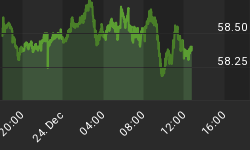The term "paradox of thrift" is being bandied about these days. This refers to the notion that if one person saves, this is good for economic activity but if we all decide to save, this is bad for economic activity. Firstly, what do we mean by "saving"? For the sake of argument, let's define saving as spending on physical goods and services less than one's income. If one spends less than his income, what happens to the "saved" part? Does it get buried in the back yard in the form of coin and currency? Perhaps. But there are other alternatives.
One alternative might be for the saver to purchase a freshly-issued bond from a corporation or to accept an IOU from a brother-in-law - that is to lend one's saving. Now, corporations or brothers-in-law typically do not borrow funds to bury them in their back yards. Usually they borrow the funds to finance some purchase of physical goods or services. In this case, the saver is cutting back on his current spending on physical goods and services so that the borrower can increase his spending. Net, net, there is no decline in spending on goods and services, just a change in who is doing the spending. The same result would come from the saver purchasing a freshly-issued stock certificate from a corporation.
Another alternative might be for the saver to purchase a seasoned corporate bond from another saver. Again, what is the seller of the seasoned bond going to do with the proceeds of his sale? Bury them in his back yard? Perhaps. But more than likely he will either use the proceeds to purchase physical goods and services or to purchase another financial asset. All else the same, the purchase of another financial asset will cause its price to rise marginally and its yield to fall. This fall in yield would induce others to cut back on their saving - thus, increase their current spending on physical goods and services because they are not being compensated enough to defer their spending.
There are two ways that an increase in saving en masse could result in a net decline in the spending on physical goods and services. The first way is if we decided to literally or figuratively bury the funds in our back yards. This represents an increase in the demand for money to hold. Classical economists called this "hoarding." Neoclassical economists call this a decrease in the velocity of money. In this case, people want to hold their new savings in the form of already-created money.
The other way that an increase in saving en masse could result in a net decline in spending on physical goods and services is if the central bank (in the U.S., the Fed) did not allow the structure of interest rates to adjust to its new lower equilibrium level. If many of us decided at the same time to increase our saving, the structure of interest rates would fall - i.e., more credit is being offered at the same interest rate. In order for the credit market to clear, the structure of interest rates would have to decline so as to induce an increase in the quantity demanded of credit. If the central bank did not lower its target rate, the marginal cost of funds for banks, then banks could not lower their loan rates. This would cause a shift of borrowing away from banks, causing bank credit and the money supply to contract, to nonbank credit providers. This fall in bank-created credit would result in a decline in spending on physical goods and services.
In sum, only if new savers want to hoard already-created money or only if the central bank prevents the structure of interest rates from declining to its new equilibrium level would an en masse increase in saving result in a decline in spending on physical goods and services. Thus, only under special cases is there any paradox of thrift.
















